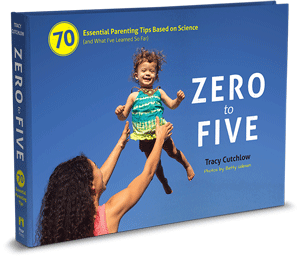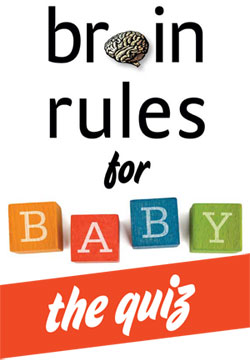Smart baby
How cookies test academic performance
Chapter excerpt
First, I need to correct a misconception. Many well-meaning moms and dads think their child’s brain is interested in learning. That is not accurate. The brain is not interested in learning. The brain is interested in surviving. Every ability in our intellectual tool kit was engineered to escape extinction. Learning exists only to serve the requirements of this primal goal. It is a happy coincidence that our intellectual tools can do double duty in the classroom, conferring on us the ability to create spreadsheets and speak French. But that’s not the brain’s day job. That is an incidental byproduct of a much deeper force: the gnawing, clawing desire to live to the next day. We do not survive so that we can learn. We learn so that we can survive.
This overarching goal predicts many things, and here’s the most important: If you want a well-educated child, you must create an environment of safety. When the brain’s safety needs are met, it will allow its neurons to moonlight in algebra classes. When safety needs are not met, algebra goes out the window. Roosevelt’s dad held him first, which made his son feel safe, which meant the future president could luxuriate in geography.
One simple example of the brain’s fixation on safety occurs during an assault. It’s called “weapon focus.” Victims of an assault often suffer from amnesia or confusion; they usually can’t recall the facial features of the criminal. But they often can completely recall the details of the weapon used. “It was a Saturday night special, held in the left hand, wood handle,” a witness might exclaim. Why remember the perp’s gun, which is not always helpful to the police, and not the perp’s face, which almost always is? The answer reveals the brain’s familiar priority: safety. The weapon holds the biggest potential threat, and the brain focuses on it because the brain is built to concentrate on survival. The brain is learning under these hostile conditions (stress can marvelously focus the mind); it is just concentrating on the source of the threat.
A former fighter pilot, teaching at an aeronautics university, discovered how this works in the classroom. One of his students had been a star in ground school but was having trouble in the air. During a training flight, she misinterpreted an instrument reading, and he yelled at her, thinking it would force her to concentrate. Instead, she started crying, and though she tried to continue reading the instruments, she couldn’t focus. He landed the plane, lesson over. What was wrong? From the brain’s perspective, nothing was wrong. The student’s mind was focusing on the source of the threat, just as it had been molded to do over the past few million years. The teacher’s anger could not direct the student to the instrument to be learned because the instrument was not the source of danger. The teacher was the source of danger. This is weapons focus, merely replacing “Saturday Night Special” with “ex-fighter pilot.”
The same is true if you are a parenting a child rather than teaching a student. The brain will never outgrow its preoccupation with survival.
Practical tip #12: Play ‘opposite day’
After my children turned 3, I employed some fun activities to improve executive function, roughly based on the canonical work of Adele Diamond. I would tell them that today was “opposite day.” When I held up a drawn picture of the night, an inky black background sprinkled with stars, they were supposed to say “day.” When I held up a picture with a big blue sky inhabited by a big yellow sun, they were supposed to say “night.” I would alternate the pictures with increasing rapidity and check for their responses.
They had a blast with this; for some reason we always ended up rolling on the floor laughing.
I did a kinetic form of this exercise with my elder son, who was a natural drummer, when he was 4. We each had a spoon and a pan. The rule was that when I struck a pan with a spoon once, he had to do it twice. When I hit a pan twice, he had to strike it three times. Or once. (I changed it up quite a bit.)
The idea for both exercises was to a) give the boys a rule and b) help them inhibit what they would do automatically in the face of this rule—a hallmark of executive function.
 Smart baby rules
Smart baby rules
- Feeling safe enables learning Face time, not screen time

If you liked the why of Brain Rules
for Baby, you’ll love the how-to of
Zero to Five:
70 Essential Parenting Tips
Based on Science (And What
I’ve Learned So Far).
New from Pear Press.


